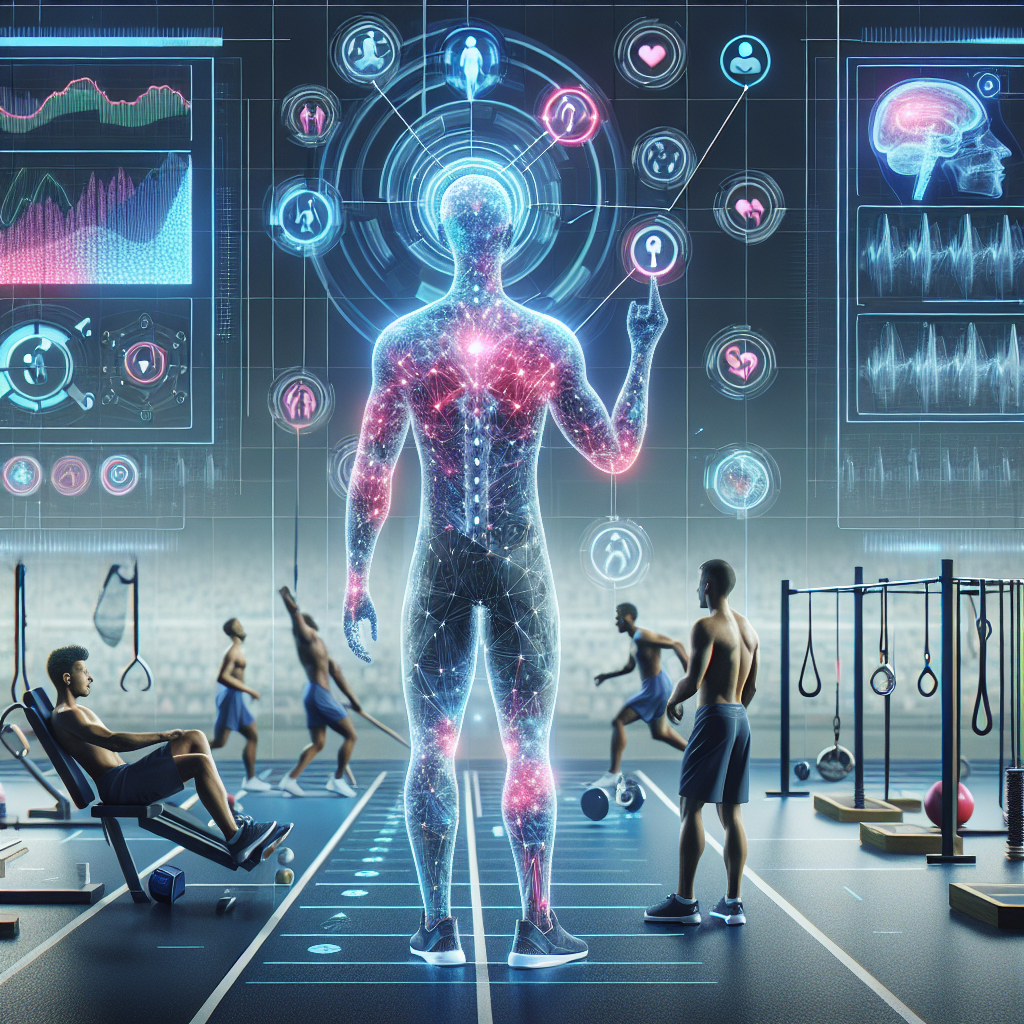In the world of sports, athlete recovery is crucial for maintaining peak performance and preventing injuries. With the advancements in artificial intelligence (AI) technology, athlete recovery monitoring has become more efficient and effective than ever before. AI-driven athlete recovery monitoring systems are being used by professional sports teams and athletes around the world to optimize recovery strategies and enhance performance. In this article, we will explore the role of AI in athlete recovery monitoring, its benefits, and how it is revolutionizing the world of sports.
AI-driven athlete recovery monitoring systems use data from various sources, such as wearable devices, biometric sensors, and training logs, to track an athlete’s physical and mental state. These systems analyze the data to provide insights into an athlete’s recovery status, identify potential risks of injury, and recommend personalized recovery strategies. By leveraging AI algorithms, coaches and sports scientists can make data-driven decisions to optimize training loads, rest periods, and recovery techniques for each athlete.
One of the key benefits of AI-driven athlete recovery monitoring is its ability to provide real-time feedback on an athlete’s recovery status. By continuously monitoring key metrics, such as heart rate variability, sleep quality, and muscle soreness, coaches can identify early signs of fatigue or overtraining and adjust training plans accordingly. This proactive approach to recovery monitoring helps athletes avoid injuries and perform at their best during competitions.
Furthermore, AI-driven athlete recovery monitoring systems can analyze large volumes of data to identify patterns and trends that may not be apparent to human coaches. By using machine learning algorithms, these systems can predict how an athlete’s body will respond to different training loads or recovery strategies, allowing coaches to tailor their approach for optimal performance. This personalized approach to recovery monitoring can help athletes reach their full potential and achieve their goals.
Another advantage of AI-driven athlete recovery monitoring is its ability to track progress over time and monitor long-term trends in an athlete’s performance. By collecting data on a daily basis and analyzing it over weeks or months, coaches can assess the effectiveness of their recovery strategies and make adjustments as needed. This continuous feedback loop helps athletes stay on track with their training goals and make informed decisions about their recovery routines.
In addition to optimizing recovery strategies, AI-driven athlete recovery monitoring systems can also help athletes improve their overall well-being and lifestyle habits. By tracking metrics such as nutrition, hydration, and stress levels, coaches can provide personalized recommendations for improving an athlete’s recovery and performance. This holistic approach to athlete monitoring can lead to better overall health and performance outcomes for athletes.
Overall, AI-driven athlete recovery monitoring is revolutionizing the world of sports by providing coaches and athletes with valuable insights and personalized recommendations for optimizing recovery strategies. By leveraging the power of AI technology, sports teams can stay ahead of the competition and help their athletes perform at their best. As the field of AI continues to advance, we can expect to see even more innovative solutions for athlete recovery monitoring in the future.
FAQs:
Q: How does AI-driven athlete recovery monitoring work?
A: AI-driven athlete recovery monitoring systems use data from wearable devices, biometric sensors, and training logs to track an athlete’s physical and mental state. The data is analyzed using AI algorithms to provide insights into an athlete’s recovery status and recommend personalized recovery strategies.
Q: What are the benefits of AI-driven athlete recovery monitoring?
A: The benefits of AI-driven athlete recovery monitoring include real-time feedback on an athlete’s recovery status, personalized recommendations for optimizing recovery strategies, and long-term trend tracking for monitoring performance improvements.
Q: How can AI-driven athlete recovery monitoring help prevent injuries?
A: By continuously monitoring key metrics such as heart rate variability, sleep quality, and muscle soreness, AI-driven athlete recovery monitoring systems can identify early signs of fatigue or overtraining and adjust training plans accordingly. This proactive approach to recovery monitoring helps athletes avoid injuries and perform at their best.
Q: How can athletes benefit from AI-driven recovery monitoring?
A: Athletes can benefit from AI-driven recovery monitoring by receiving personalized recommendations for optimizing their recovery strategies, improving their overall well-being and lifestyle habits, and tracking their progress over time to achieve their training goals.
Q: What is the future of AI-driven athlete recovery monitoring?
A: As the field of AI continues to advance, we can expect to see even more innovative solutions for athlete recovery monitoring in the future. These advancements may include more sophisticated AI algorithms, improved data integration, and enhanced predictive capabilities for optimizing athlete performance.

